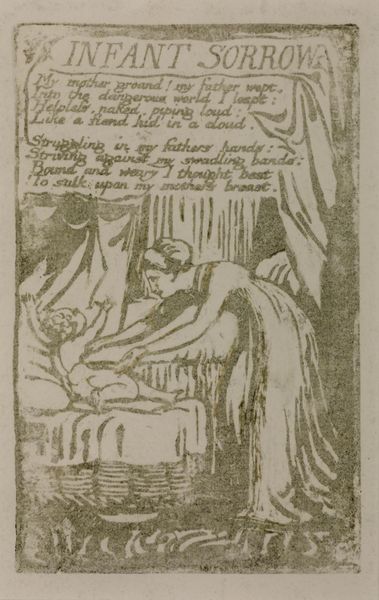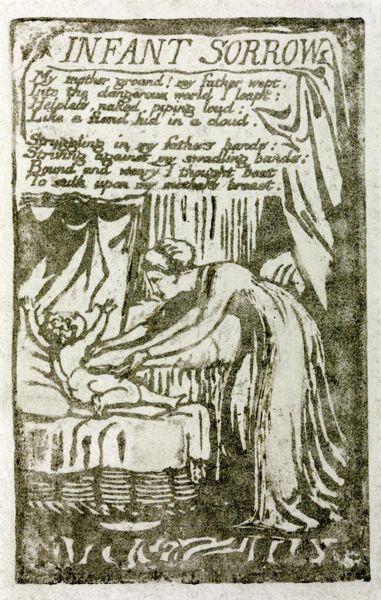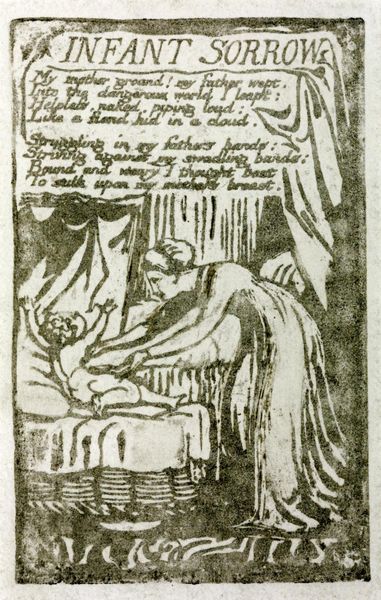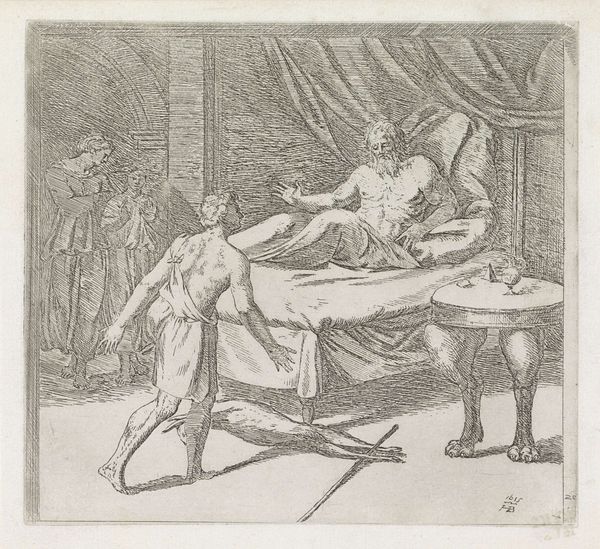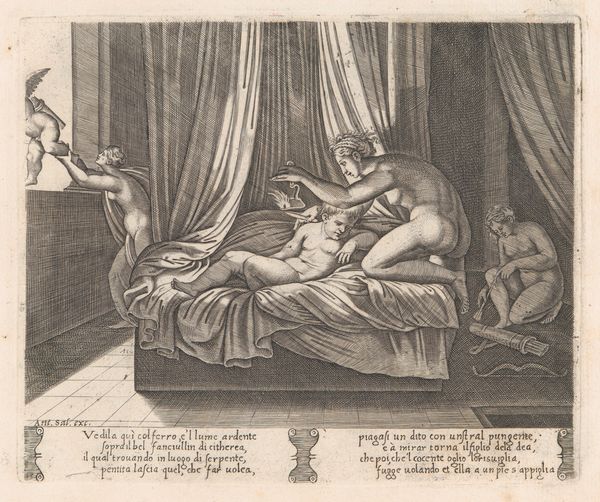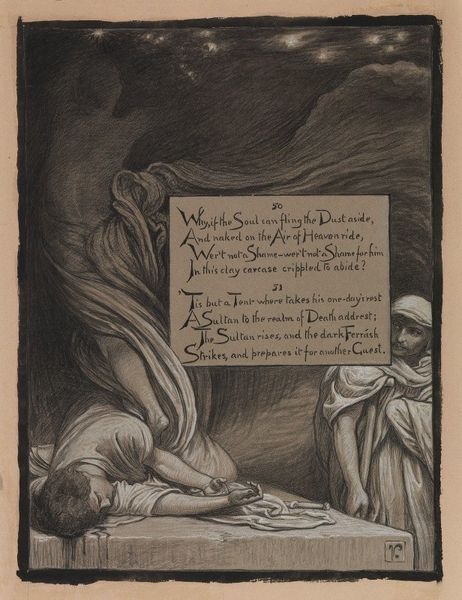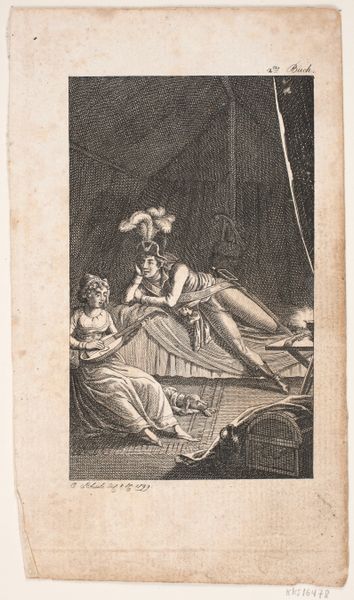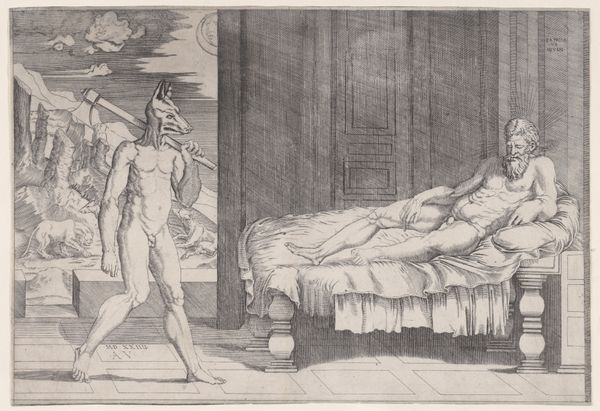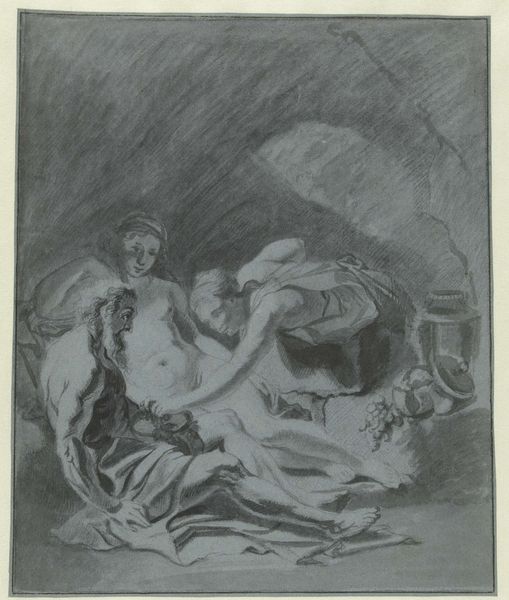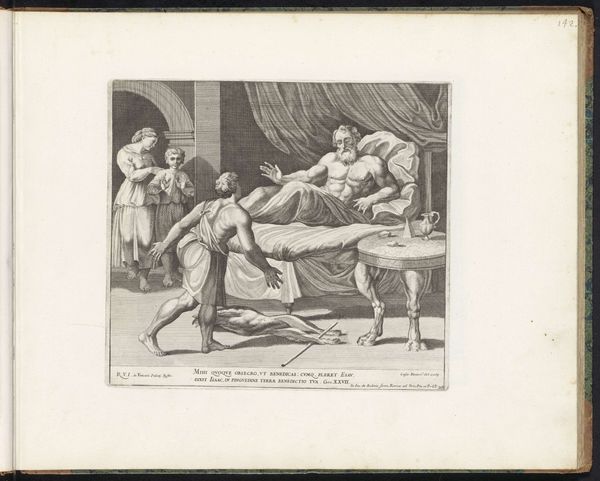
Dimensions: image: 112 x 97 mm
Copyright: CC-BY-NC-ND 4.0 DEED, Photo: Tate
Editor: This is William Blake's ‘Infant Sorrow’ from ‘Songs of Innocence and of Experience’. It's an etching, and the textural quality is quite striking. What elements of the composition stand out to you? Curator: The stark contrast between the dense lines forming the figures and the relative openness of the background space creates a visual tension. Consider the semiotic weight of the swaddling bands; they are not merely clothing, but symbols of constraint. Editor: So, you're seeing the form itself as a key part of the meaning? Curator: Precisely. The formal elements—the lines, the textures, the deployment of light and shadow—are not simply representational; they actively construct the poem's meaning. Editor: That gives me a lot to think about. I see the poem and the image working together now.
Comments
tate 8 months ago
⋮
http://www.tate.org.uk/art/artworks/blake-songs-of-innocence-and-of-experience-infant-sorrow-a00036
Join the conversation
Join millions of artists and users on Artera today and experience the ultimate creative platform.
tate 8 months ago
⋮
This poem is a contrast to Infant Joy from Songs of Innocence. The child is born into a dangerous world, despite the trappings of comfort and prosperity around his bed. Even in his first natural state of naked helplessness, the child conceals what adults would regard as an evil spirit (‘fiend’). The pressures of conformity (‘my swaddling bands’) will release this spirit in ‘struggling’ and ‘striving against’. The act of sulking on his mother’s breast suggests only a brief respite before the ‘fiend’ (properly, the child’s true individuality) finally asserts itself in adulthood. Gallery label, May 2003
